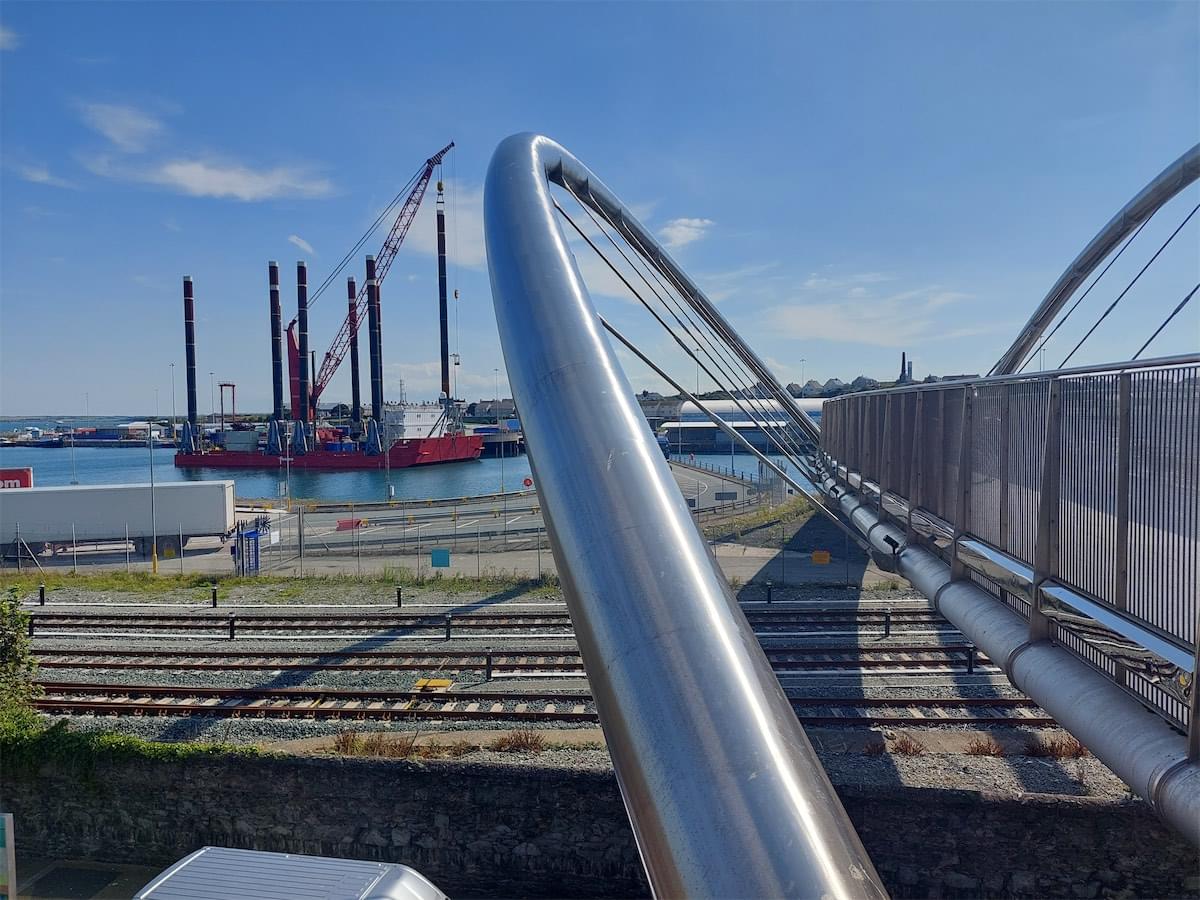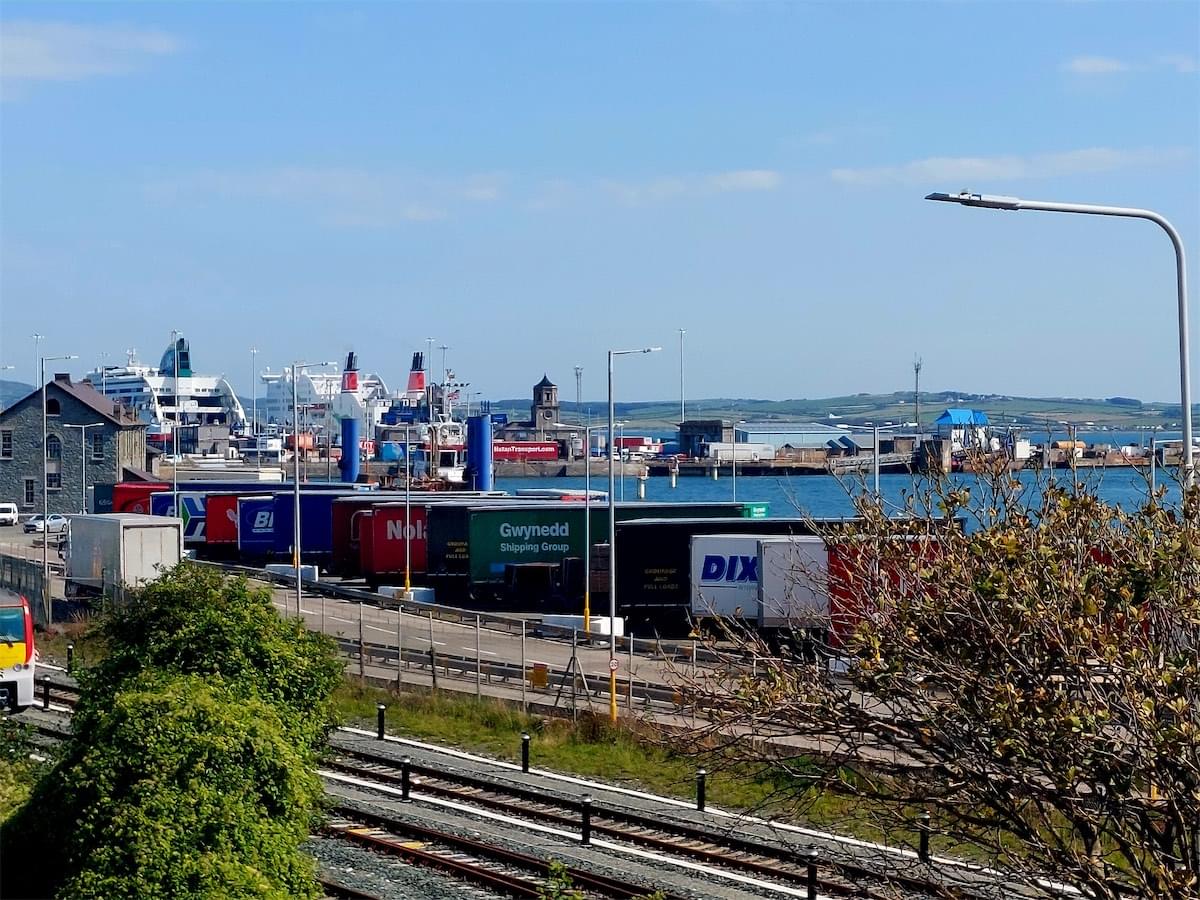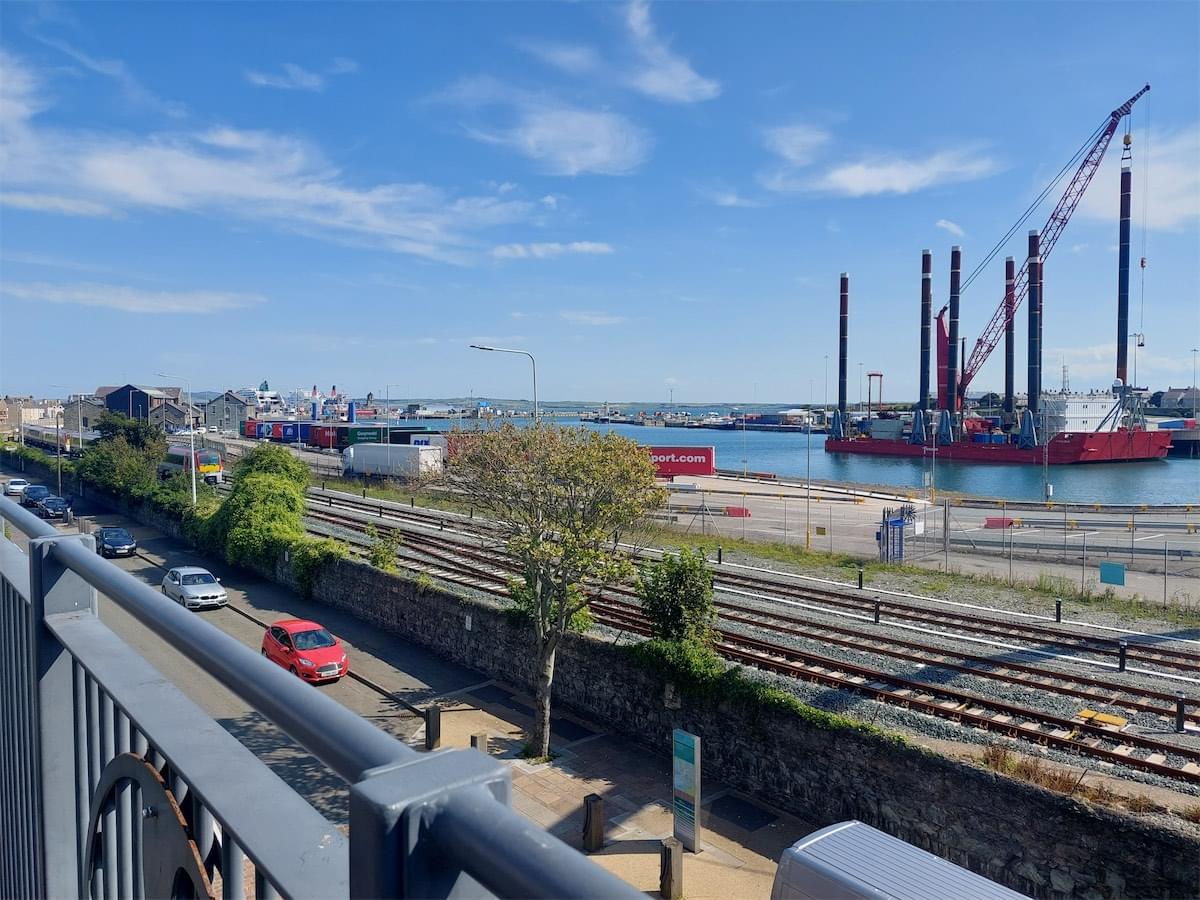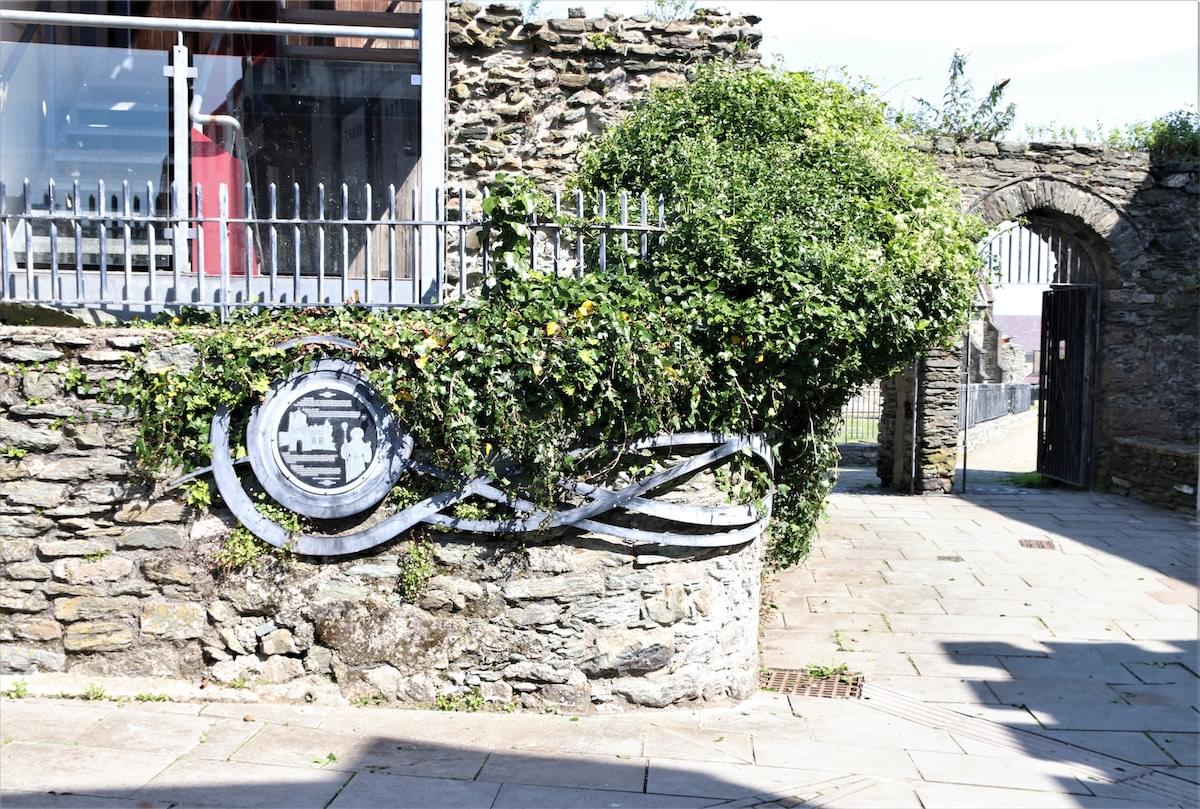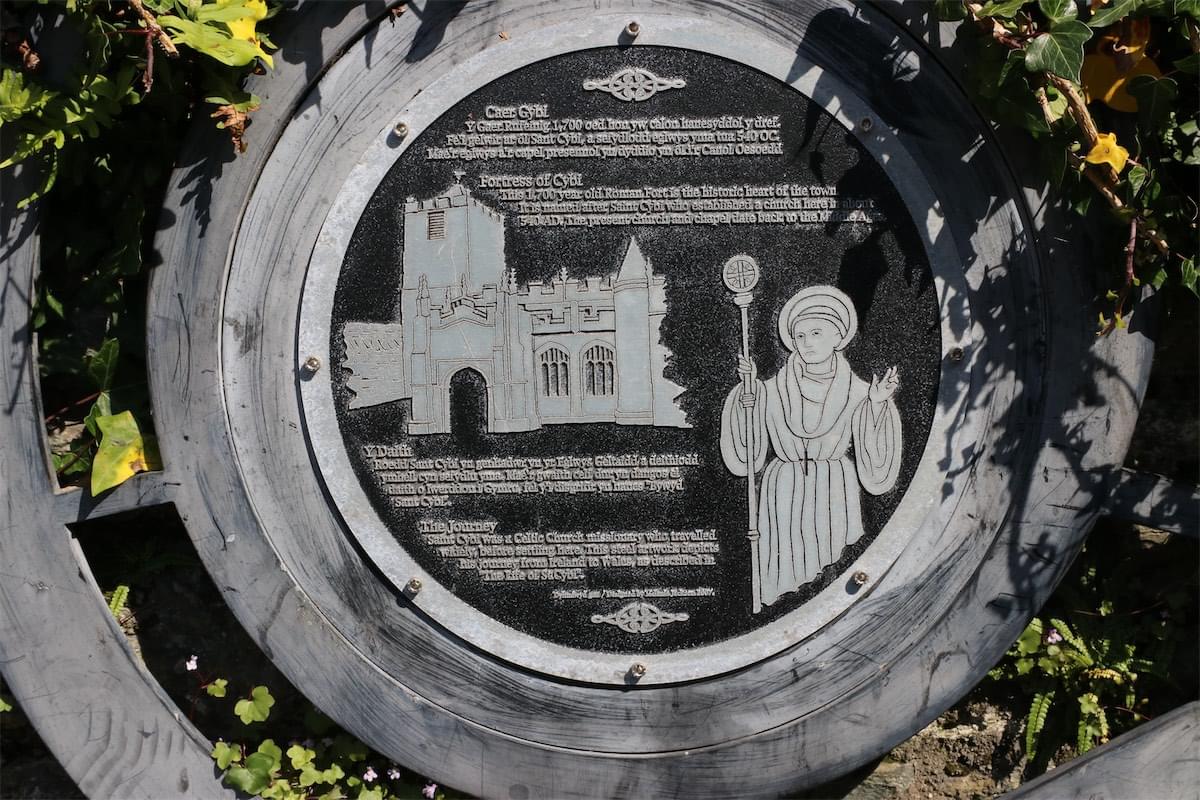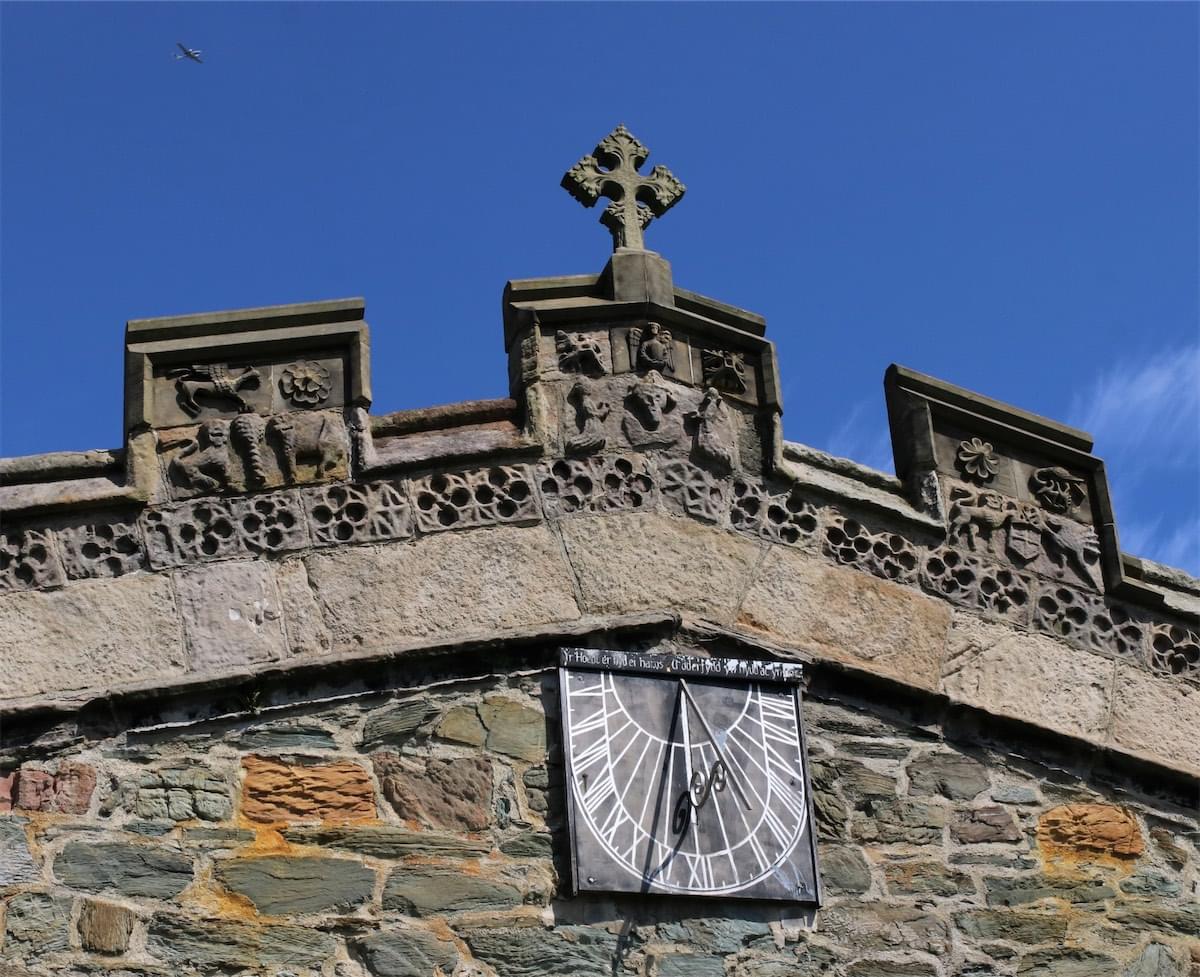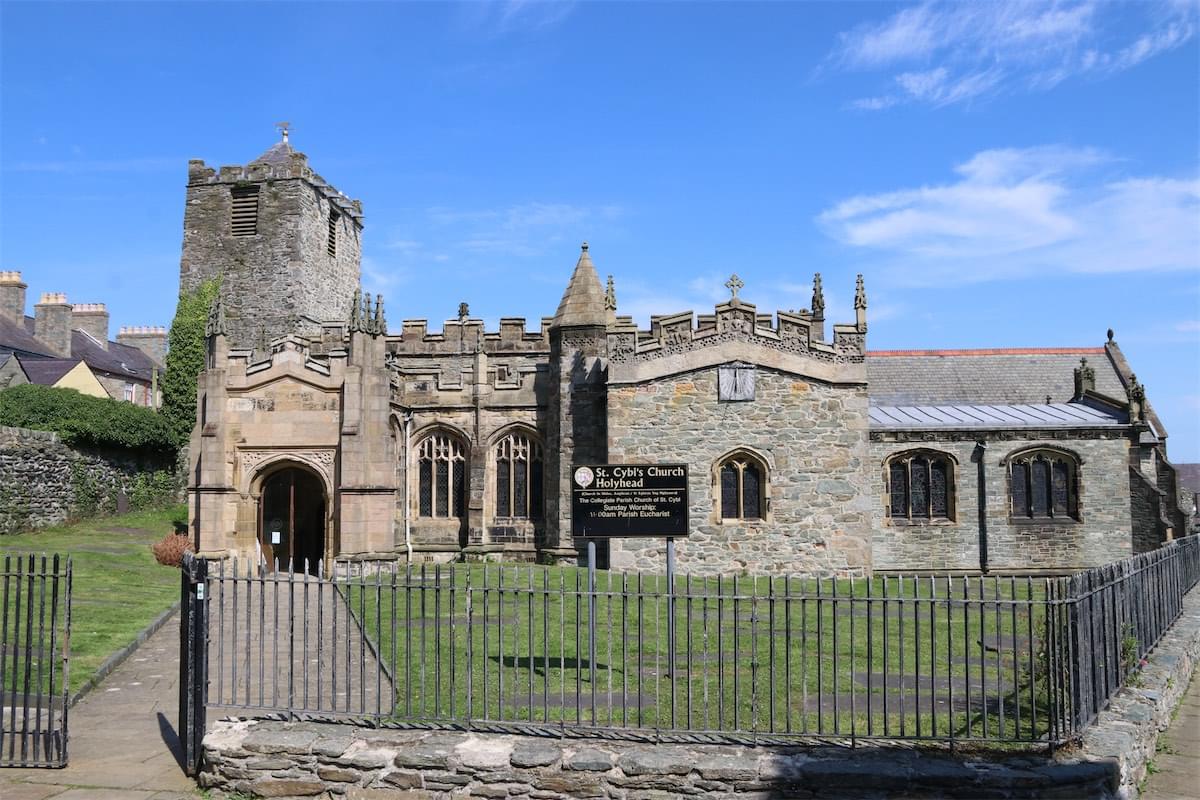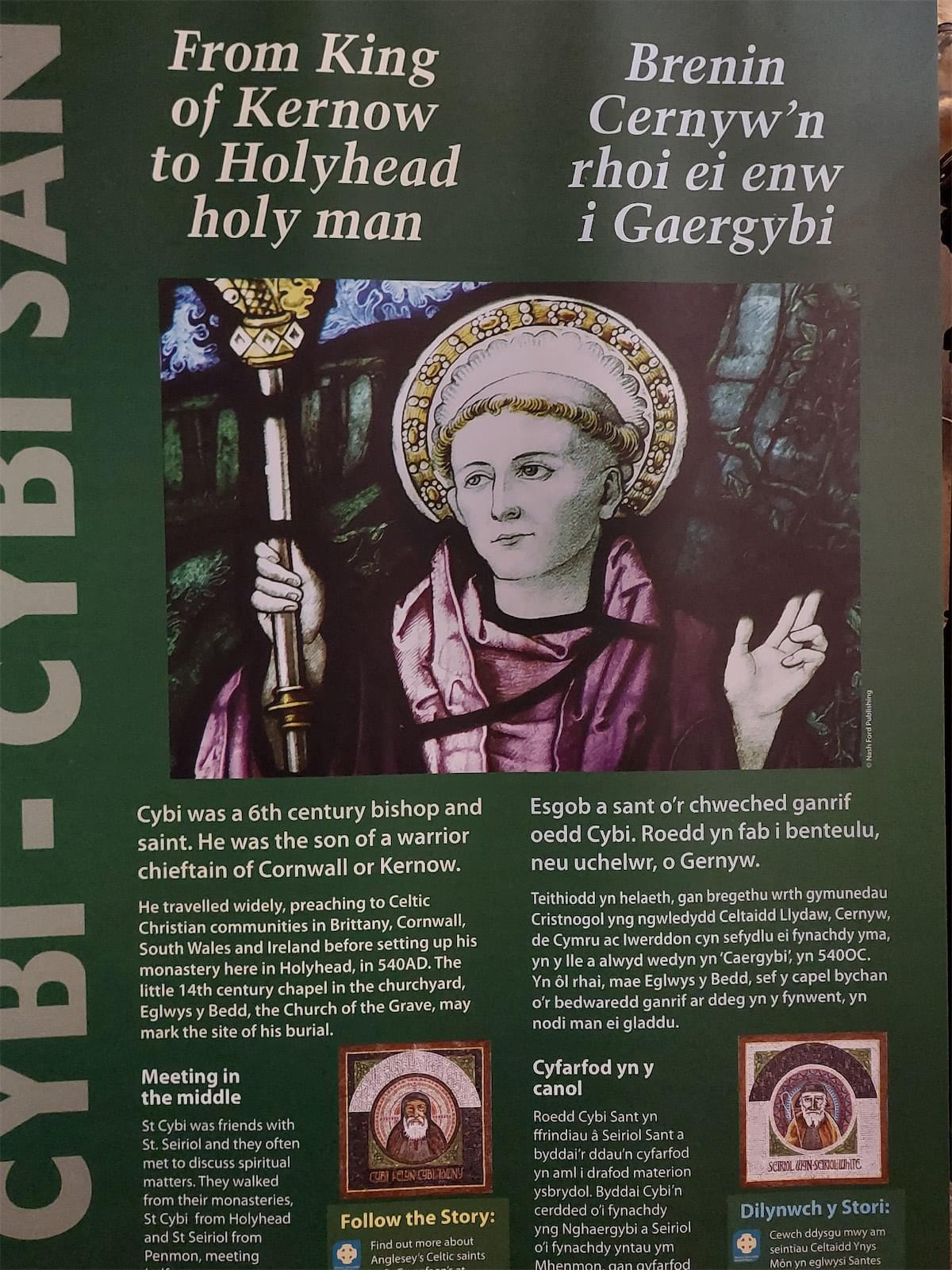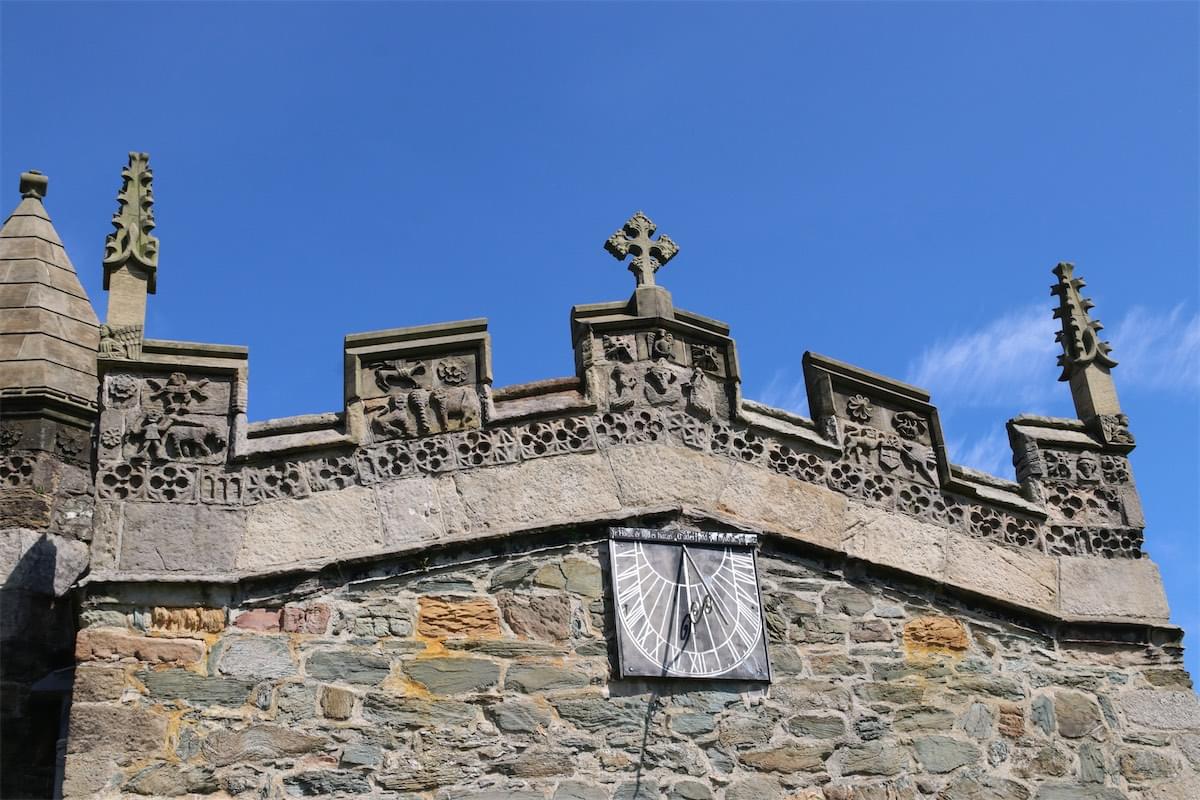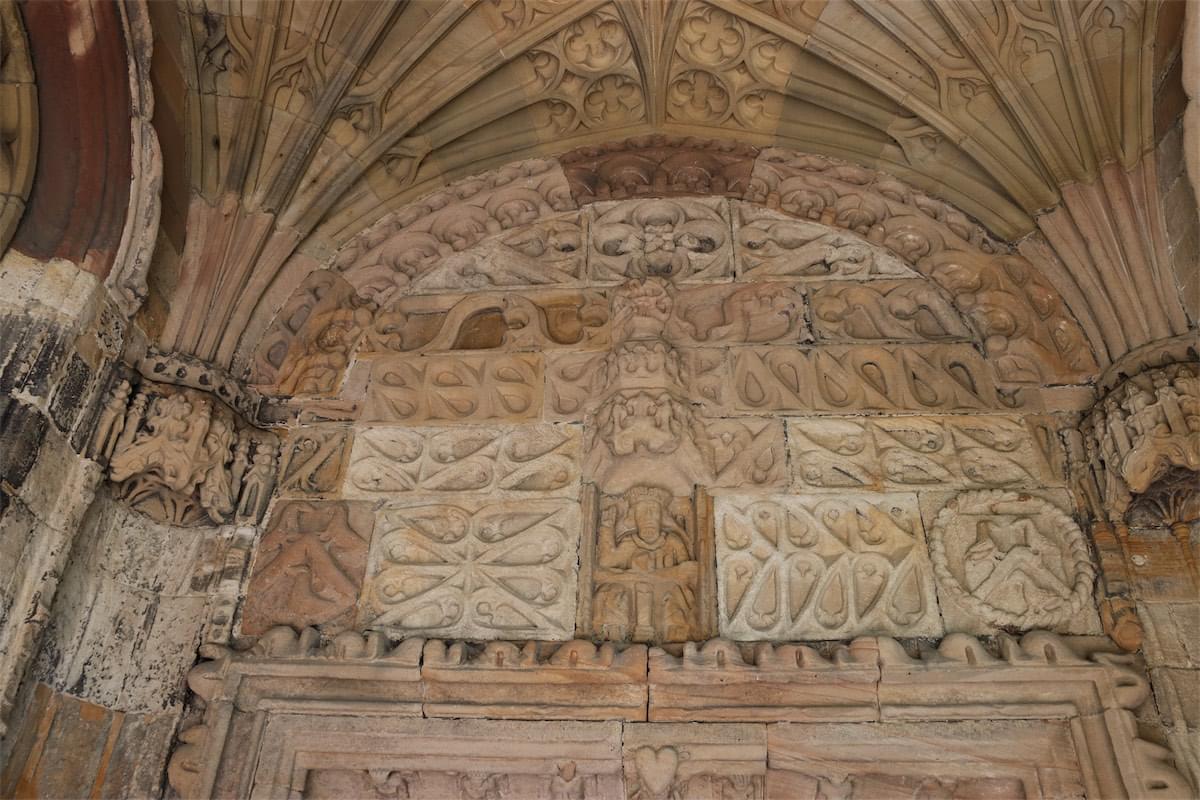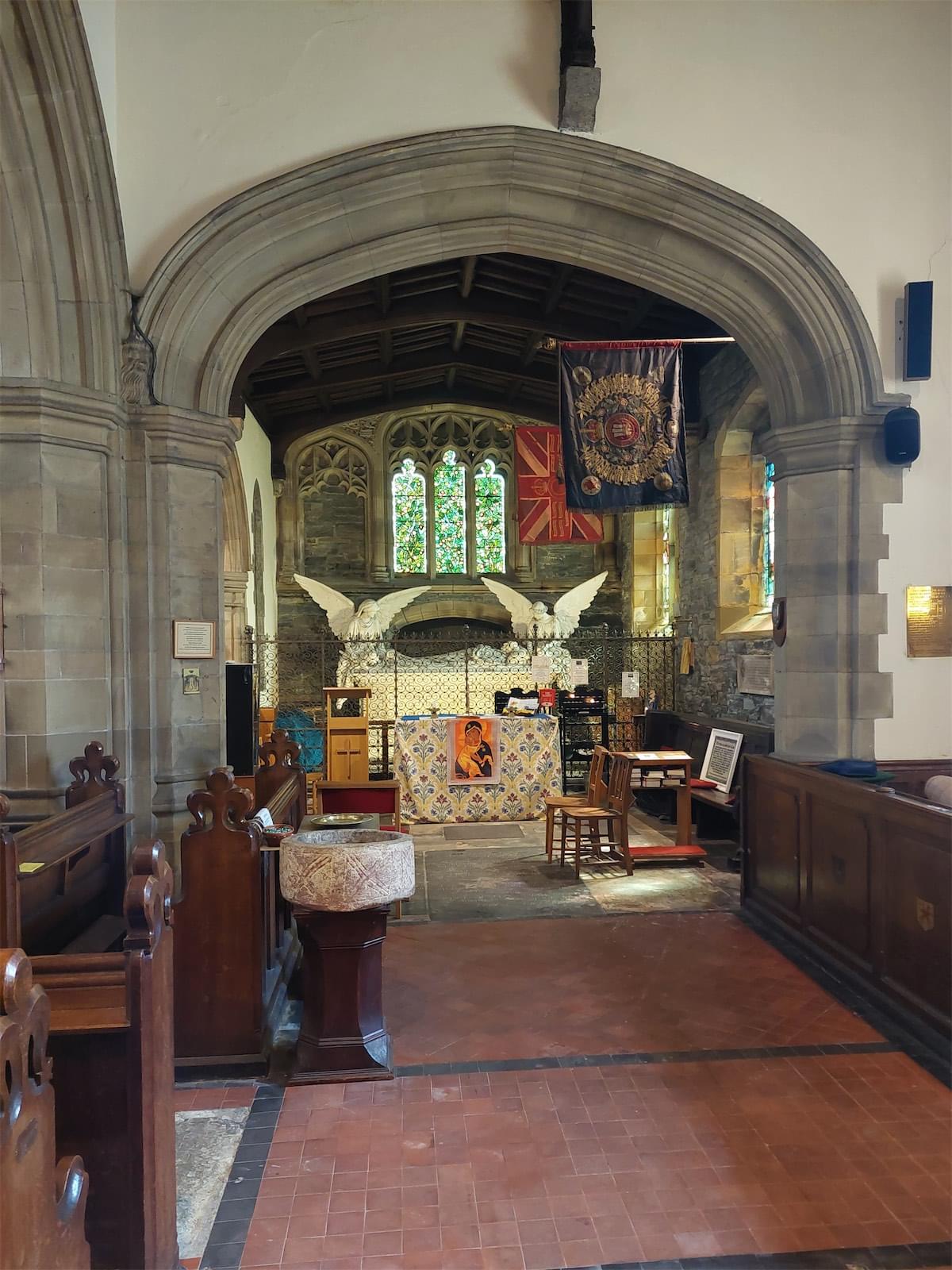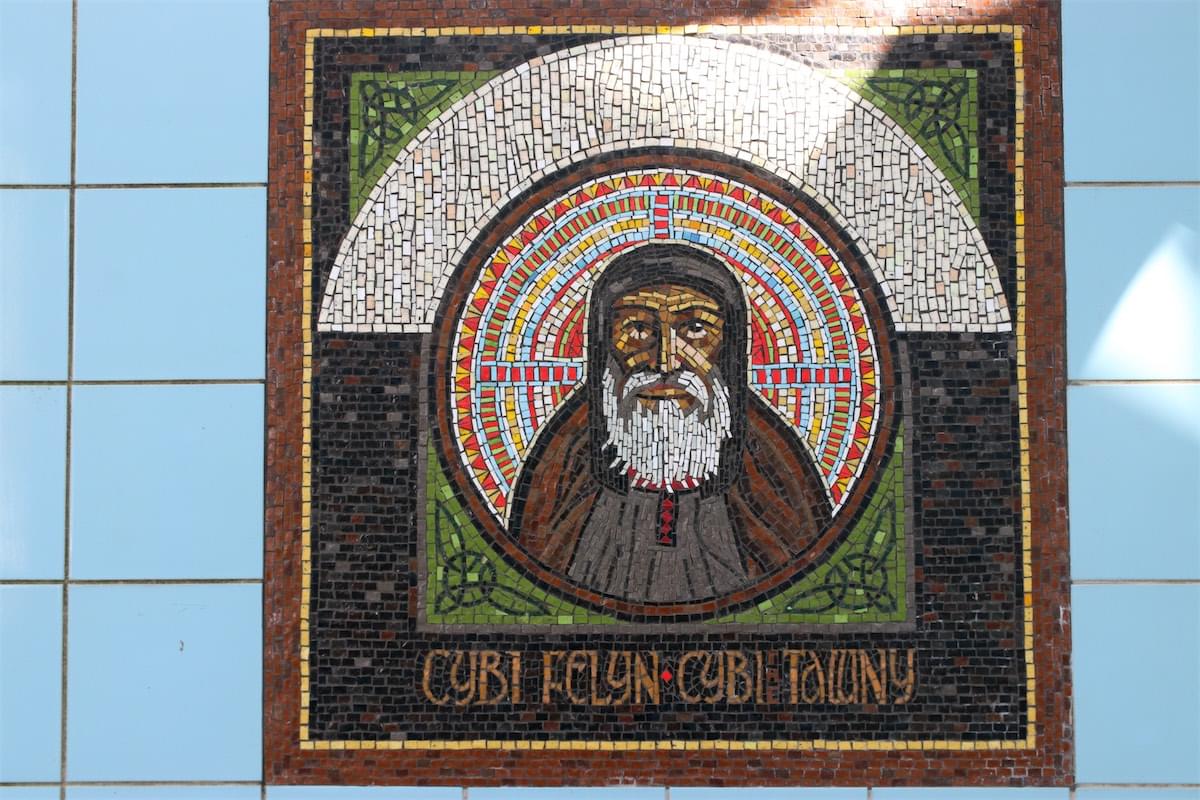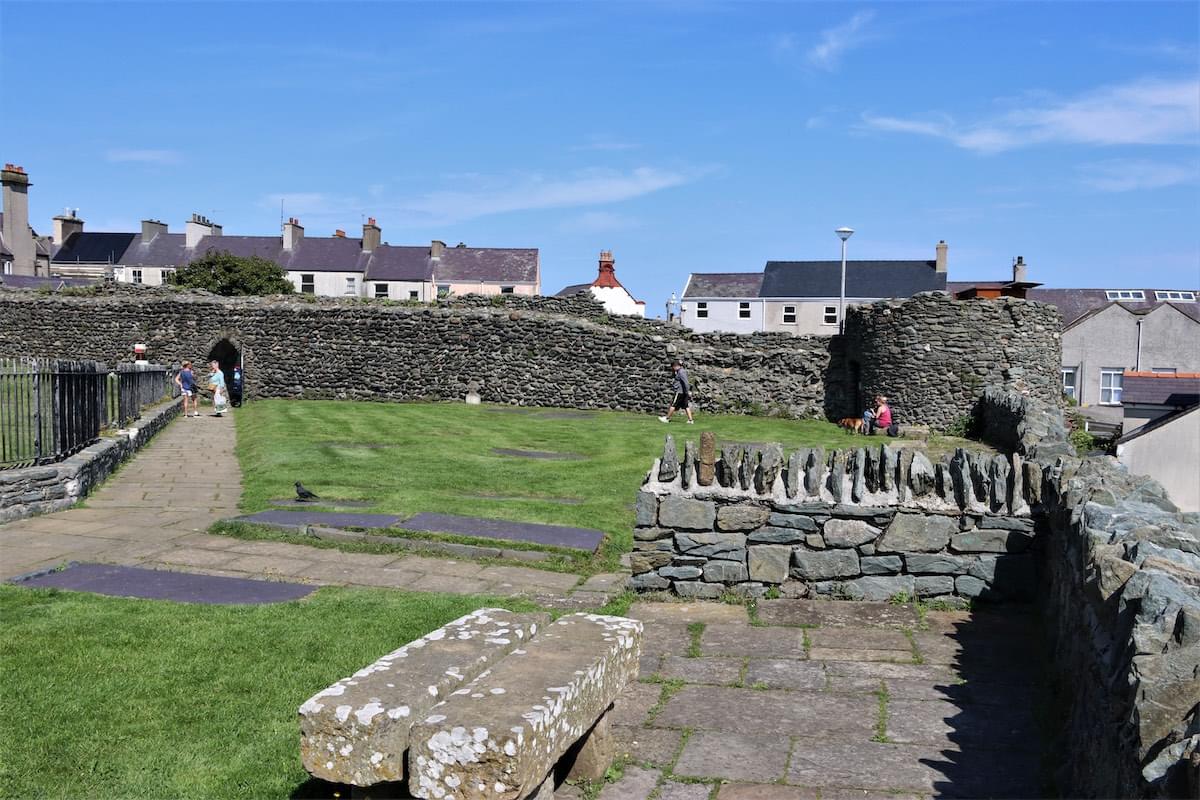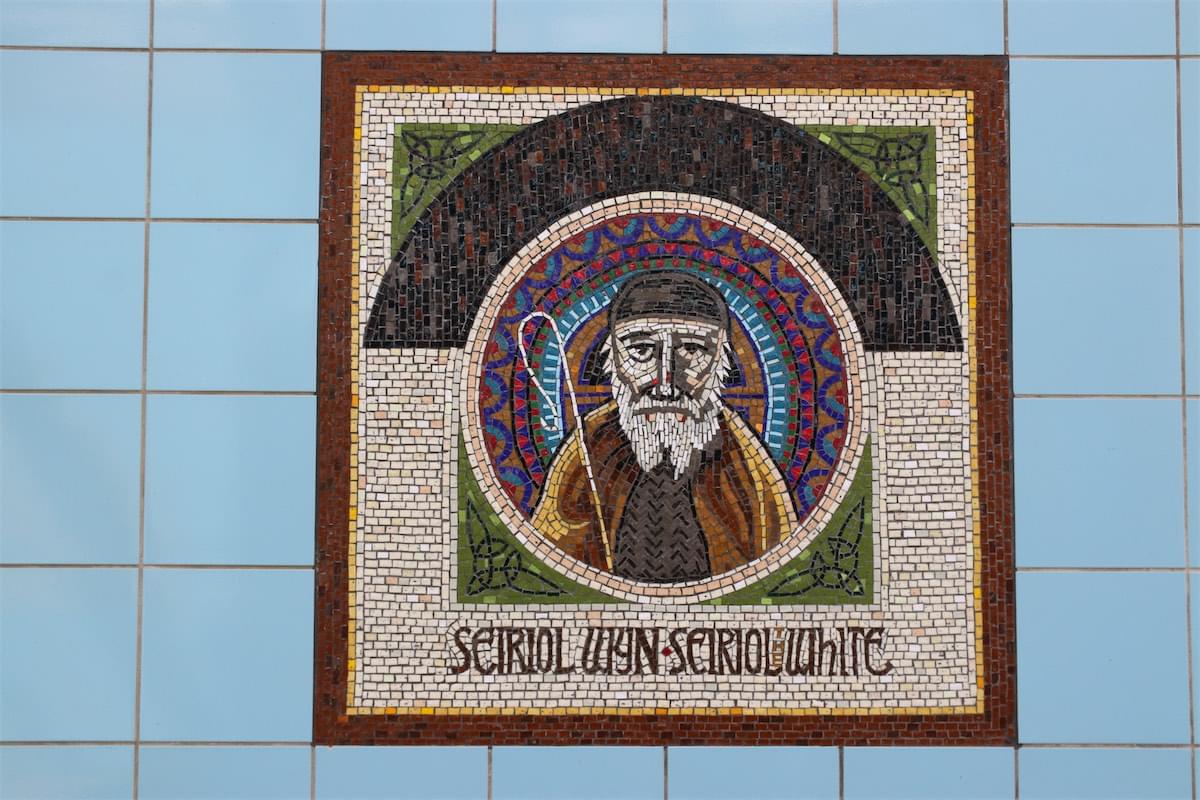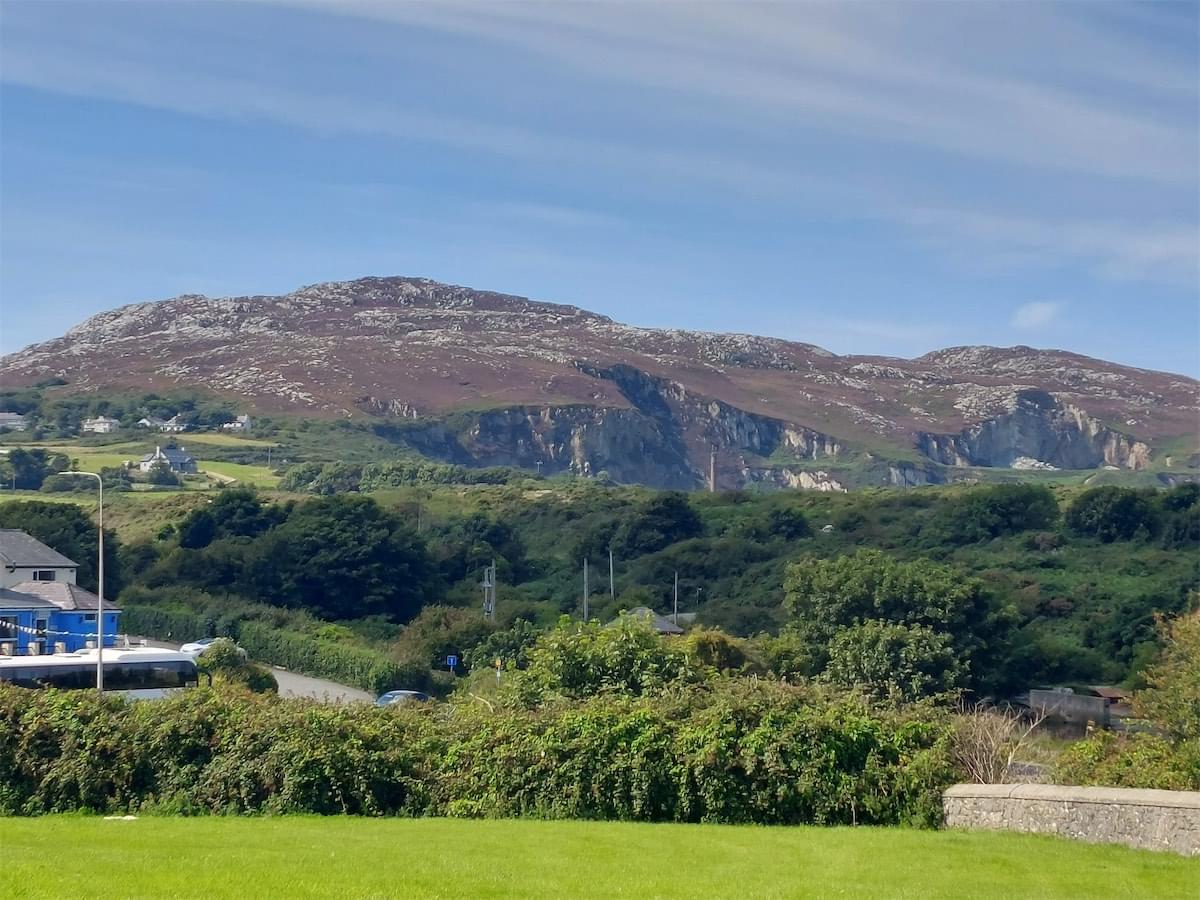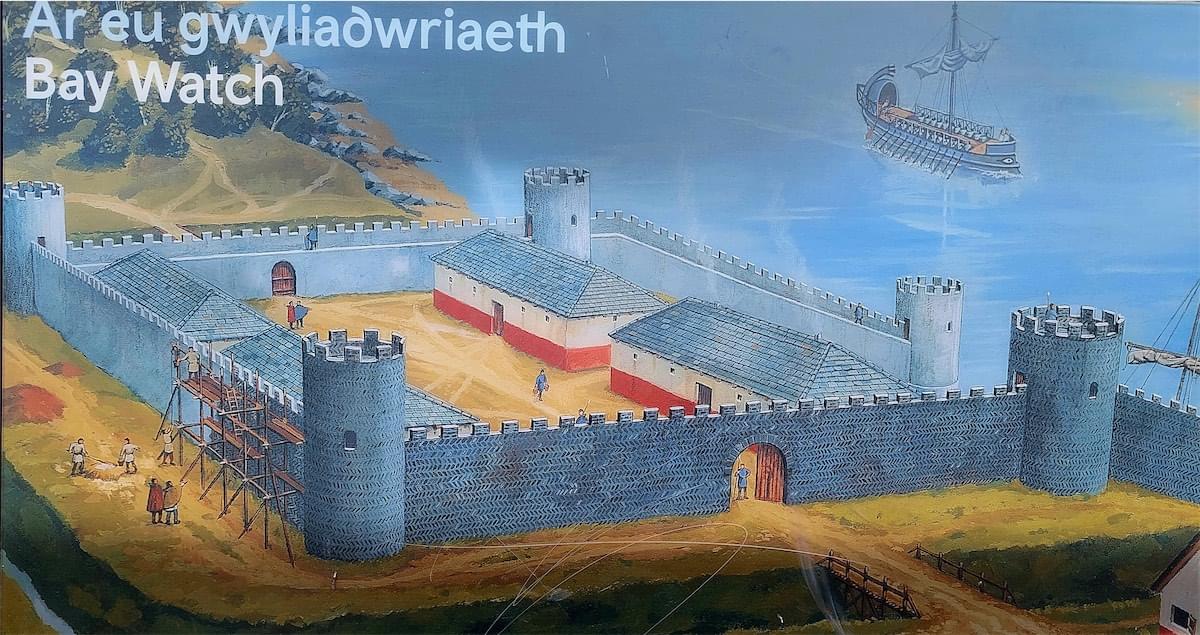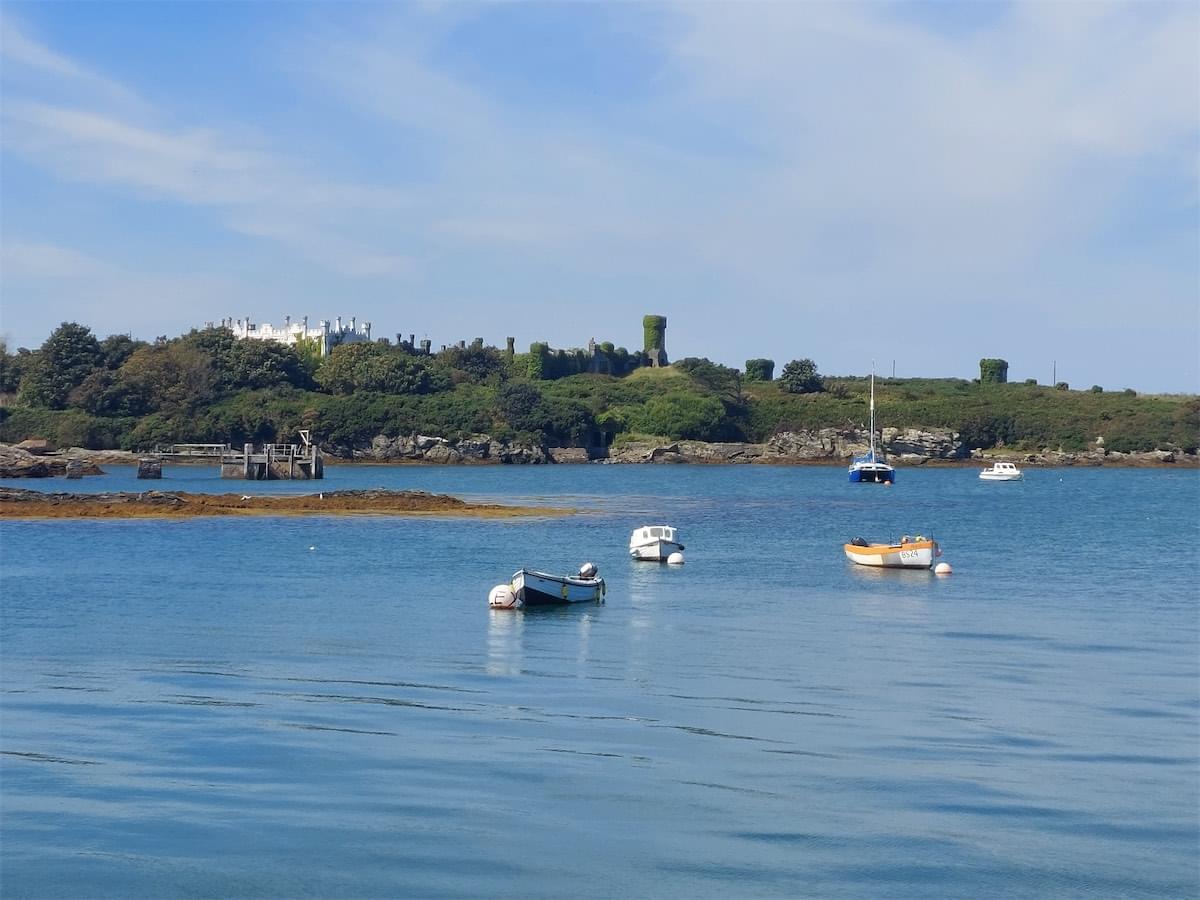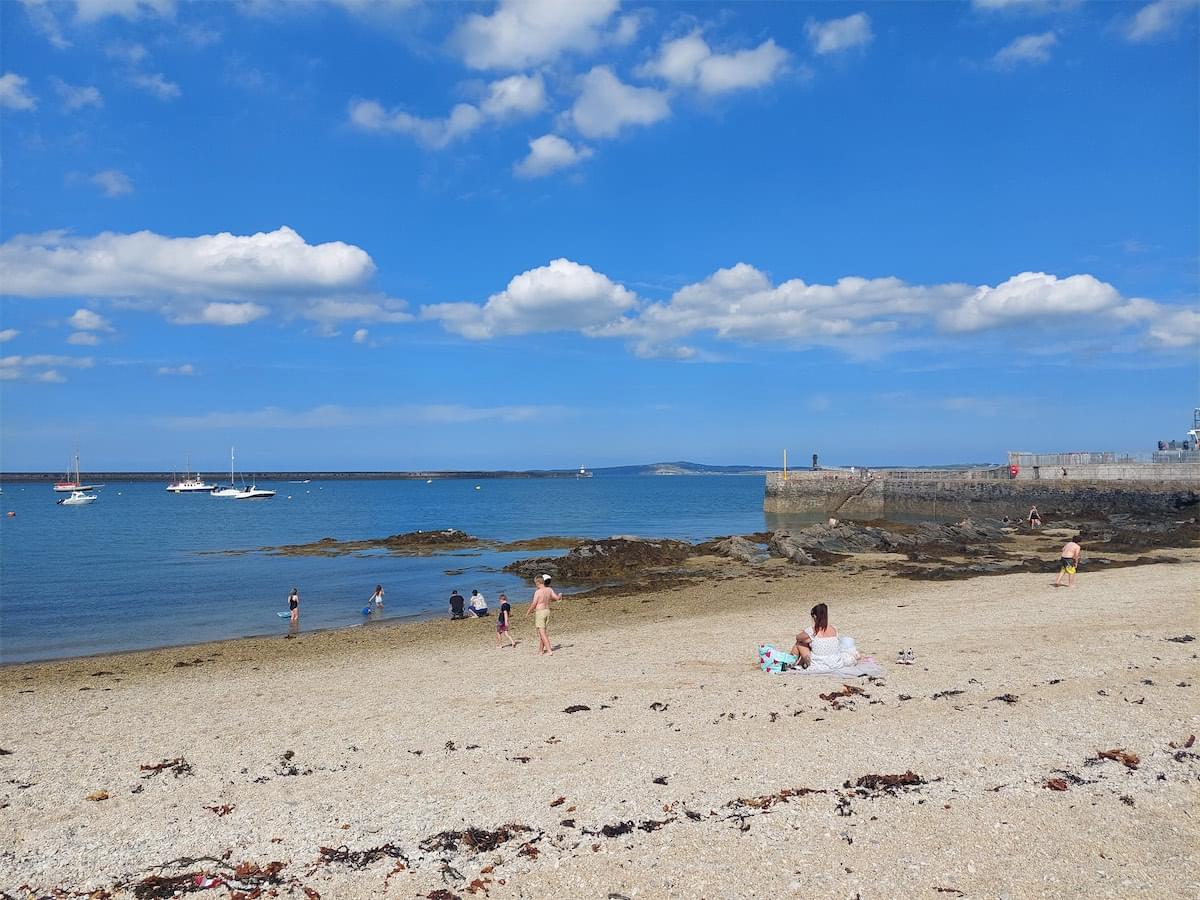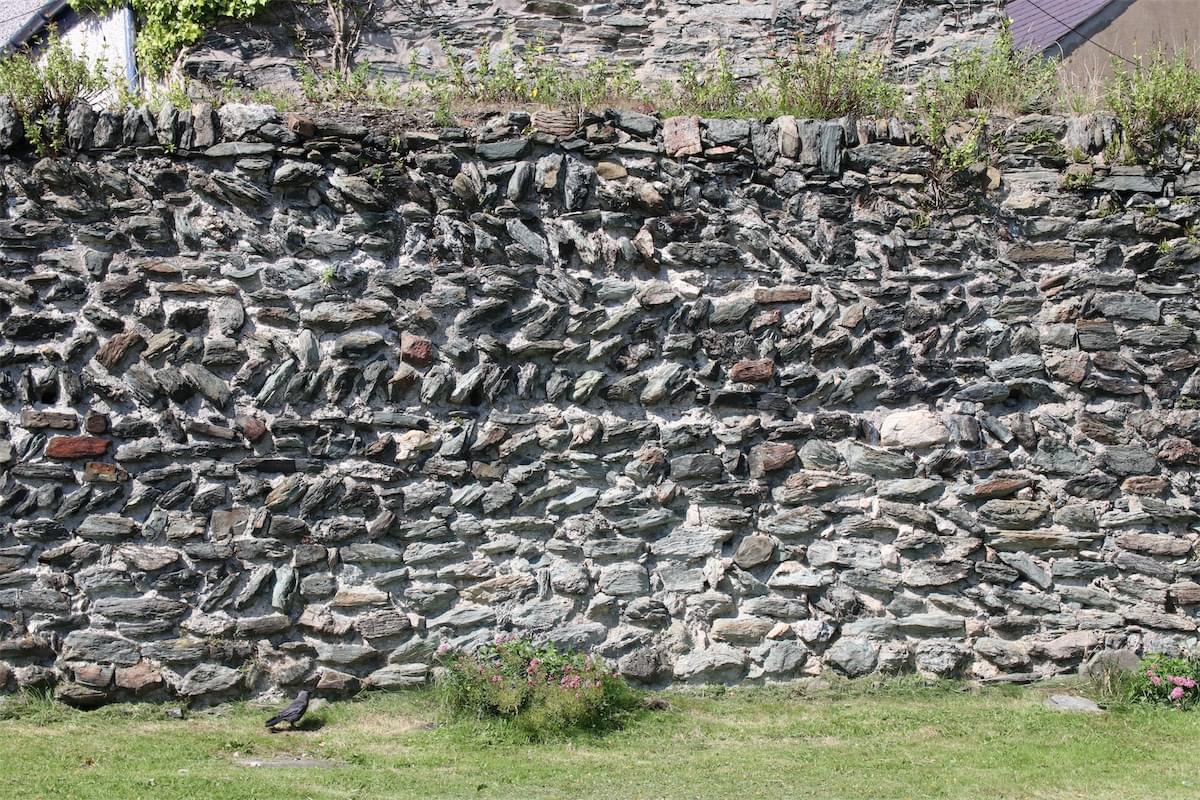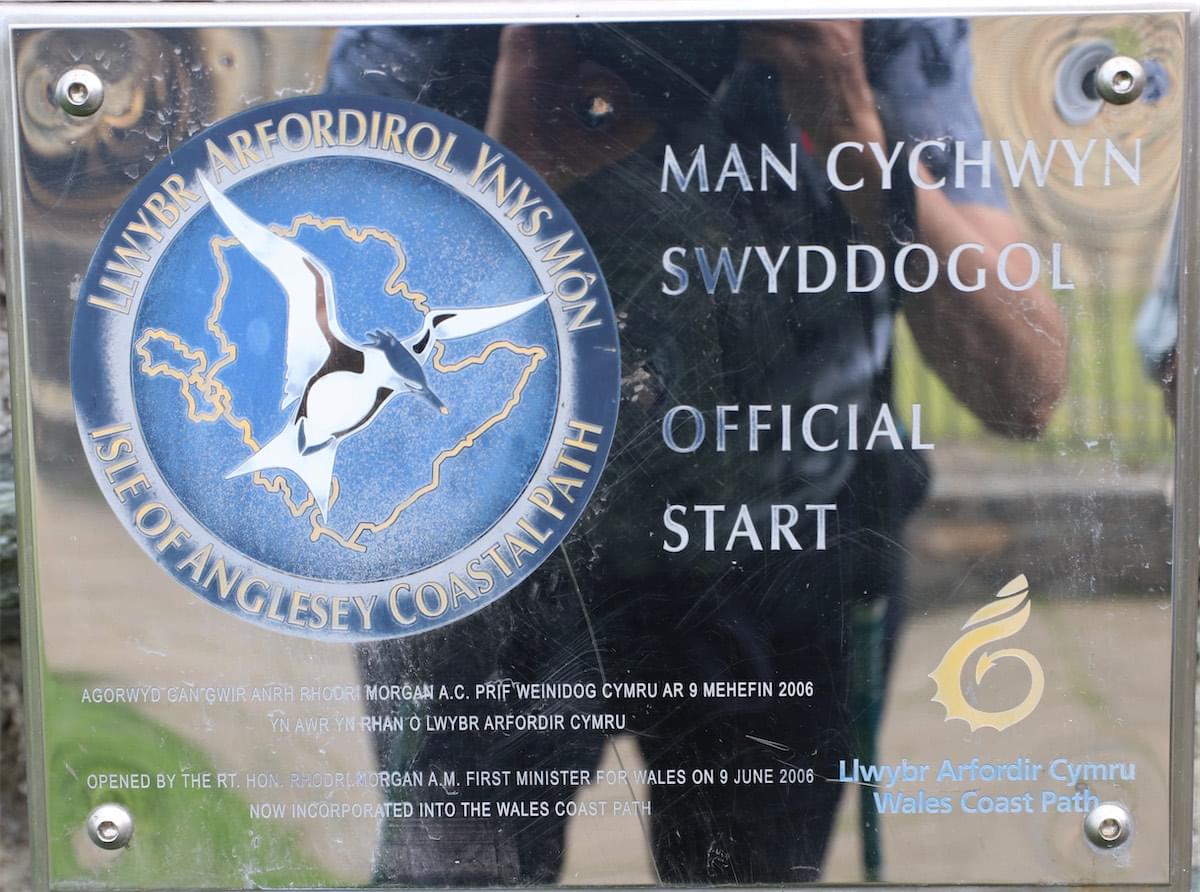A couple of weeks ago, Beryl and I decided to travel by train to Holyhead (Caer Gybi) for a days visit. We have usually driven through the town having visited or walked at South Stack & Holyhead mountain, so not given much thought to the history of the town. We took “The Flier” from Chester Station at 10.00am, and rattled through the Welsh Countryside only stopping at Llandudno Junction and Bangor. It was great to see the River Dee Estuary from a new angle, and as we approached Conway, to go across the Stephenson railway bridge alongside the Castle and see the old Telford Suspension Bridge. I had crossed that as a twelve year old in the 1950’s when cycling around Wales, when it was still the main road bridge across the river. How things have changed! Later in our journey we travelled onto the Britannia Bridge across the straits with the “new” road deck underneath. You could see the original stone lions guarding the bridge from the train, which are not visible from the road.
We reached Holyhead (Caer Gybi) in 1 hr 25minutes, on a glorious morning, and were immediately impressed by the activity around the Ferry Port, with two ferries berthed to take the lorries we had probably seen some hours earlier travelling along the A41 at Christleton. A spectacular new steel arched Celtic Bridge leads across the busy road from the station to the town. It really made the port look very impressive. This port is the centre of trade to Dublin, significantly marked by the Dublin Packet pub just off the highway.
Our next major surprise after reading welcoming information at the end of the Celtic bridge, was the link to the Roman Legion in Chester, and the coming of Christianity to the port. The small walled enclosure built as a port by the Roman Legion is still visible today, with all the features expected of a walled fortress. Beautiful stone walls in a herring bone style, typical of Roman building, but built using material from the local quarries under Holyhead mountain. I also remembered that on the top of Holyhead Mountain there is a small Roman look out, with amazing views towards Ireland, across the Irish sea and to The Isle of Man. Seeing the small fortress had been a great surprise, but why hadn’t I ever thought that Holyhead, Caer Gybi means the Fortress of Gybi. Travel anywhere in North Wales and the buses to Chester are signed Caer, (a fortress town).
Let’s now go back to the fortress and look at the Church of St Cybi’s which has been built within the footprint of the fortress. The settlement here was established in 540AD, by St Cybi, first cousin of St David, the Patron Saint of Wales. It’s said that Cybi was a 6th century son of a warrior chieftain of Cornwall or Kernow. He is pictured in my sequence of pictures with his friend St. Seriol at Penmon Priory. These two men established Christianity in the region. Cybi died in 554 leaving a legacy which lasted until the reformation. It was sacked by the Vikings in the 10th. century and suffered further damage in 1405 when Henry IV’s army invaded Anglesey from Ireland. Most of Wales was then in the control of Owain Glyndwr, who is said to have taken St Cybi’s Shrine & relics to the Cathedral in Dublin. The building we see today is the Church of the Grave, built in the 14thC and is a magnificent example of a stone building from that period. It was further restored after being garrisoned by soldiers of Cromwell in the 17thC. The soldiers destroyed a lot of the fabric of the church, windows, font, tombs, and statues. However some of the higher carvings were saved, as was the magnificent Tympanium over the main door. This is the finest example I’ve seen in Wales, with God in Majesty supporting the Crucified Christ; The Holy Trinity. There is so much detail in the stone work here, and along the exterior roof, including the Coat of Arms of England & France and a Tudor Rose. At the side of the chancel there is St David’s Chapel, also known as the Stanley Chapel. This last addition to the church was designed by Sir Gilbert Scott in 1897 as a memorial to the Honourable William Owen Stanley MP for Anglesey, archaeologist and benefactor to the town of Holyhead. He financed the refurbishment to the church in 1870, and his wife Elin who pre-deceased him, financed the chapel. It is dedicated to the presence of the host, and is a blend of Victorian Gothic and Pre-Raphaelite art. The windows are by William Morris and based on the work of his friend Sir Edward Burne-Jones. Among the other treasures is a life sized sculpture of W I Stanley in Carara marble. This is just a brief glimpse of a magnificent building, and really well worth a visit.
In the grounds of this wonderful unique fortress, there is a small stone building, the first school in Holyhead to provide a basic education to the poor boys of the Parish. There is also a steel plaque which is the starting point for the Isle of Anglesey Footpath. The most significant point for me was that this small Roman fortress holds so many more treasures than its original purpose, but the evidence of the occupation is still there within those beautifully preserved walls. It is amazing to think that the Roman soldiers who built this fort, had possibly marched through Christleton. A description I’ve read states, that the church is in the centre of a three sided Roman Coastal Port. The fourth side was a cliff above the sea shore. The small garrison was under the control of the main fort at Segontium, Caernarfon. They were the Valeria Vitrix, the XXth Legion, based at Deva, Chester. By the end of the 4th century they had withdrawn to Rome.
With thanks to references from the Official Guide to St Cybi’s Church. Also the website visitholyisland.co.uk

